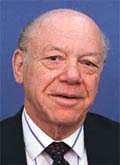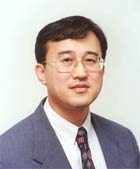Contents: 2024 | 2023 | 2022 | 2021 | 2020 | 2019 | 2018 | 2017 | 2016 | 2015 | 2014 | 2013 | 2012 | 2011 | 2010 | 2009 | 2008 | 2007 | 2006 | 2005 | 2004 | 2003 | 2002 | 2001
2006,18
Viscoelastic damping and piezo-electric control of structures subjected to aerodynamic noise
language: English
received 27.11.2006, published 28.12.2006
Download article (PDF, 650 kb, ZIP), use browser command "Save Target As..."
To read this document you need Adobe Acrobat © Reader software, which is simple to use and available at no cost. Use version 4.0 or higher. You can download software from Adobe site (http://www.adobe.com/).
ABSTRACT
Analytical and numerical simulations are carried out in order to identify physical parameters affecting acoustic and motion control by viscoelastic piezo-electric and material damping. Numerical simulations in terms of critical parameters, such as relaxation functions of the structure and piezo-electric devices, aerodynamic coefficients, Mach number, are carried out to evaluate their sensitivity to system responses, sensing and structural control. Computational simulations indicate that light weight piezo-electric viscoelastic devices can be effectively used to actively or passively control flight vehicle structural response to aerodynamic noise.
15 pages, 14 figures
Сitation: Cristina E. Beldica, Harry H. Hilton, Sung Yi. Viscoelastic damping and piezo-electric control of structures. Electronic Journal “Technical Acoustics”, http://www.ejta.org, 2006, 18.
REFERENCES
1. Lighthill, M. J. On sound generated aerodynamically. I. General theory. Proceedings of the Royal Society (London), 1952, 222A, 564–587.
2. Lighthill, M. J. On sound generated aerodynamically. II. Turbulence as a source of sound. Proceedings of the Royal Society (London), 1954, 231A, 1–32.
3. Cremer, L., Heckl, M. and Ungar, E. E. Structure-Borne Sound. 1988, Springer-Verlag, NY.
4. Goldstein, M. E. Aeroacoustics. 1976, McGraw-Hill, New York.
5. Lyrintzis, A. S., Mankbadi, R. R., Baysal, O. and Ikegawa, M. Computational Aeroacoustics. ASME FED–279, 1995, ASME, New York.
6. Hubbard, H. H. Aeroacoustics of flight vehicles. Vol. 1: Noise sources & 2: Noise control. NASA Reference Publication 1258, 1991, Washington, DC.
7. Atassi, H. M. (Ed.) Unsteady Aerodynamics, Aeroacoustics and Aeroelasticity of Turbomachines and Propellers. 1993, Springer-Verlag, New York.
8. Beranek, L. L., Ed. Noise and Vibration Control. 1971, McGraw-Hill, New York.
9. Crighton, D. G., Dowling, A. P., Ffowcs Williams, J. E., Heckl, M. and Lippington, F. G. Modern Methods in Analytical Acoustics. 1992, Springer, New York.
10. Hardin, J. C. and Hussaini, M. Y. Computational Aeroacoustics. 1993, Springer-Verlag, New York.
11. Junger, M. C. and Feit, D. Sound, Structures, and Their Interaction, 2nd Ed., 1986, MIT Press, Cambridge.
12. Bisplinghoff, R. L., Ashley, H. and Halfman, R. R. Aeroelasticity. 1955, Addison-Wesley, Cambridge, MA.
13. Dowell, E. H. Aeroelasticity of Plates and Shells. 1975, Noordhoff, Leyden.
14. Dowell, E. H. and Ilganov, M. Studies in Nonlinear Aeroelasticity. 1988, Springer-Verlag, New York.
15. Dowell, E. H., Crawley, E. F., Curtiss Jr., H. C., Peters, D. A., Scanlan, R. H. and Sisto, F. A Modern Course in Aeroelasticity, 3rd ed. 1995, Kluwer Academic Publishers, Dordecht.
16. Cao, X. S. and Mlejnek, H. P. Computational prediction and redesign for viscoelastically damped structures. Computer Methods in Applied Mechanics and Engineering, 1995, 125, 1–16.
17. Hilton, H. H. Pitching instability of rigid lifting surfaces on viscoelastic supports in subsonic or supersonic potential flow. Proceedings of the Third Midwestern Conference on Solid Mechanics, 1957, 1–19.
18. Hilton, H. H. The divergence of supersonic, linear viscoelastic lifting surfaces, including chordwise bending. Journal of the Aero/Space Sciences, 1960, 27, 926–934.
19. Hilton, H. H. Viscoelastic and structural damping analysis. Proceedings of the Damping ’91 Conference, Air Force Technical Report WL-TR-91-3078, 1991, III, ICB 1–15, Wright Patterson AFB, OH.
20. Hilton, H. H. and Vail, C. F. Bending-torsion flutter of linear viscoelastic wings including structural damping. Proceedings AIAA/ASME/ASCE/ AHS/ASC 34th Structures, Structural Dynamics and Materials Conference, AIAA Paper 93–1475, 1963, 3, 1461–1481.
21. Ungar, E. E. (1971) Damping of panels. Noise and Vibration Control, (L. L. Beranek, Ed.) 1971, 434–475, McGraw-Hill, New York.
22. Yi, S., Ahmad, M. F. and Hilton, H. H. Dynamic responses of plates with viscoelastic damping treatment. ASME Journal of Vibration and Acoustics, 1996, 118, 362–374.
23. Hilton, H .H., Vinson, J. R. and Yi, S. Anisotropic piezo-electro-thermo-viscoelastic theory with applications to composites. Proceedings of the 11th International Conference on Composite Materials, 1997, VI, 4881–4890, Gold Coast, Australia.
24. Beldica, C. E., Hilton, H. H. and Yi, S. A sensitivity study of viscoelastic, structural and piezo-electric damping for flutter control. Proceedings of the 39th AIAA/ASME/ASCE/AHS/ ASC Structures, Structural Dynamics and Materials Conference, AIAA Paper No. 98-1848, 1998, 2:1304–1314.
25. Beldica, C. E. and Hilton, H. H. Nonlinear viscoelastic beam bending with piezoelectric control - analytical and computational simulations. Journal of Composite Structures, 2001, 1, 195–203.
26. Hilton, H. H. and Yi, S. (1999) Creep divergence of nonlinear viscoelastic lifting surfaces with piezoelectric control. Proceedings of the Second International Conference on Nonlinear Problems in Aviation and Aerospace, S. Sivasundaram, Ed., 1999, 1, 271–280, European Conference Publications, Cambridge, UK.
27. Hilton, H. H., Kubair, D. and Beldica, C. E. Piezoelectric bending control of nonlinear viscoelastic plates probabilities of failure and survival times. Contemporary Research in Engineering Mechanics, G. A. Kardomateas and V. Birman, Eds., 2001, 81–94, ASME, New York.
28. Hilton, H. H. Achour, M. and Greffe, C. Failure probabilities and survival times of light weight viscoelastic sandwich panels due to aerodynamic noise and piezoelectric control. Proceedings of the International Workshop on High Speed Transport Noise and Environmental Acoustics (HSTNEA 2003), 2004, 68–78, Computer Center of the Russian Academy of Sciences, Moscow, Russia.
29. Nashif, A. D., Jones, D. I. G. and Henderson, J. P. Vibration Damping. 1985, John Wiley & Sons, NY.
30. Jones, D. I. G. Handbook of Viscoelastic Vibration Damping. 2001, John Wiley & Sons, New York.
31. Lazan, B. J. Damping of Materials and Members in Structural Mechanics. 1968, Pergamon Press, Oxford.
32. Holloway, F. and Vinogradov, A. Material characterization of thin film piezoelectric polymers. Proceedings of the 11th International Conference on Composite Materials, 1997, VI, 474–482, Gold Coast, Australia.
33. Vinogradov, A. M. and Holloway, F. Cyclic creep of piezoelectric polymer polyvinylidene fluoride. AIAA Journal, 1999, 39, 2227–2229.
34. Vinogradov, A. M. and Holloway, F. Electro-mechanical properties of the piezoelectric polymer PVDF. Ferroelectrics, 1999, 226, 169–181.
35. Vinogradov, A. M. Nonlinear characteristics of piezoelectric polymers. Proceedings of 2001 ASME International Mechanical Congress and Exposition, 2001, IMECE 2001/AD-23736, ASME, New York.
36. Hilton, H. H., Hsu, J. and Kirby, J. S. Linear viscoelastic analysis with random material properties. Journal of Probabilistic Engineering Mechanics, 1991, 6, 57–69.
37. Sears, W. R. Some aspects of non-stationary airfoil theory and its practical applications. Journal of the Aeronautical Sciences, 1941, 8, 104–108.
38. Abramowitz, M. and Stegun, I. A. Eds. Handbook of Mathematical Functions. 1964, National
Bureau of Standards, Washington, DC.
39. Christensen, R. M. Theory of Viscoelasticity - An Introduction, 2nd ed., 1981, Academic Press, New York.
40. Hilton, H. H. An introduction to viscoelastic analysis. Engineering Design for Plastics, E. Baer, Ed., 1964, 199–276. Reinhold Publishing Corp., New York.
41. Yi, S. and Hilton, H. H. Dynamic finite element analysis of viscoelastic composite plates in the time domain. International Journal for Numerical Methods in Engineering, 1994, 37, 4081–4096.
42. Schapery, R. A. Approximate methods of transform inversion for viscoelastic stress analysis. Proceedings Fourth US National Congress of Applied Mechanics, 1962, 2, 1075–1085. ASME, New York.
 |
Cristina E. Beldica holds an MS in Aeronautical Engineering from the University Politehnica of Bucharest, Romania and a Ph.D. in Engineering Mechanics from the University of Illinois at Chicago. She has been at University of Illinois at Urbana-Champaign (UIUC) since 1996. Prior to this she has served as Research Assistant at University of Illinois at Chicago, Assistant Professor at the University Politehnica of Bucharest and R&D Engineer at ICA Aircraft Manufacturing, Romania. Currently, she is a Program Manager at the National Center for Supercomputer Applications (NCSA) at the UIUC. She also holds a joint appointment in the Aerospace Engineering (AE) Department at UIUC. Nationally, she is a member of the American Institute of Aeronautics and Astronautics Technical Committee on Structures and an Associate Fellow. |
|
 |
Harry H. Hilton received a BS and an MS in Aeronautical Engineering from New York University and a PhD in Theoretical and Applied Mechanics with a minor in mathematics from UIUC. At UIUC he has been AE department head from 1974 to 1985 and an assistant dean of engineering during the summers of 1989 and 1990. Currently, he is Professor Emeritus of AE and Senior Academic Lead for Computational Structural Mechanics at NCSA. He also holds an appointment as Charles E. Schmidt Distinguished Visiting Professor at Florida Atlantic University. He is a member of several international and national scientific committees, which organize technical conferences and set policies, standards and future planning in aerospace, high performance computing and mechanics. He is an AIAA Fellow. e-mail: h-hilton(at)uiuc.edu |
|
 |
Sung Yi holds an associate professor position in the Mechanical Engineering Department at the Portland State University, Oregon. Sung Yi was awarded a Ph.D. degree in aeronautical and astronautical engineering from the University of Illinois at Urbana-Champaign in 1992. His primary teaching and research interests lie in the areas of electronic packaging, delamination & failure mechanisms of electronic packages and composites, constitutive modeling and characterization of materials, computational simulation, etc. |
|
